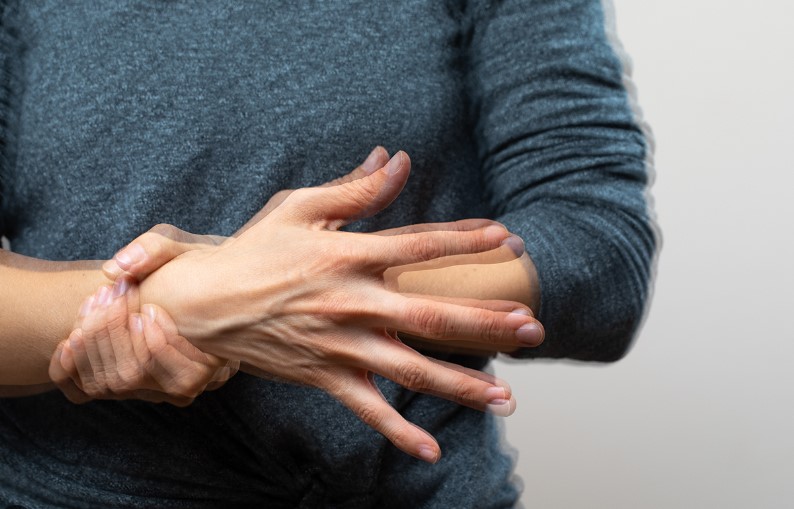Cannabis, a popular recreational and medicinal substance, can sometimes lead to an uncomfortable side effect known as the “cannabis shakes.” Involuntary muscle twitches and tremors, these shakes can be alarming for individuals who experience them. However, it’s important to understand that they are generally harmless and temporary. In this comprehensive guide, we will delve into the various factors that contribute to the cannabis shakes, including overstimulation, anxiety, cold environments, and excessive THC consumption. By gaining a deeper understanding of this phenomenon, individuals can learn how to minimize the likelihood of experiencing the shakes and manage them effectively if they do occur.
Table of Contents
What Are the Weed Shakes?
Cannabis shakes, commonly referred to as weed shakes, describe the involuntary muscle twitches and tremors that some individuals experience after consuming cannabis. This phenomenon is a result of the complex interaction between cannabinoids, primarily THC (tetrahydrocannabinol), and the body’s endocannabinoid system. THC, the psychoactive compound in cannabis, binds to specific receptors in the brain and peripheral tissues, affecting various physiological functions.
The shakes can vary in intensity, ranging from subtle tremors to noticeable muscle spasms. They usually occur shortly after cannabis consumption and can last for a few minutes to a couple of hours, depending on factors such as the individual’s tolerance, the method of consumption, and the THC potency of the strain.
While the exact mechanism behind cannabis shakes is not fully understood, it is believed to involve the modulation of neurotransmitter release and neural pathways by cannabinoids. The shakes are considered a common side effect, especially among novice users or individuals sensitive to THC. It’s important to note that these shakes are typically harmless and temporary, resolving on their own as the effects of cannabis wear off.
Individual differences play a significant role in how people experience cannabis shakes. Factors such as body weight, metabolism, overall health, and previous cannabis use can influence the likelihood and intensity of these shakes. Additionally, the presence of other substances in the body, such as stimulants or medications, can interact with cannabis and exacerbate the shaking effect.
Researchers and medical professionals continue to study cannabis shakes to gain a deeper understanding of their underlying causes and variations among users. While they can be disconcerting, especially for new users, education and awareness are crucial in normalizing these temporary side effects and reducing anxiety associated with cannabis consumption.
It’s worth noting that if the shakes persist, worsen, or are accompanied by other concerning symptoms, individuals should seek medical advice promptly. This ensures proper evaluation and guidance, especially if there are underlying health conditions that might be contributing to the symptoms.
Causes: Understanding the Triggers
The occurrence of cannabis shakes can be attributed to a combination of physiological and environmental factors. By dissecting these causes, we can gain valuable insights into prevention and management strategies:
1. Overstimulation:
Overstimulation serves as a significant trigger. When cannabis is consumed alongside stimulants such as nicotine or caffeine, the nervous system becomes highly stimulated. This excessive stimulation elevates dopamine levels, potentially resulting in muscle twitches or tremors. Individuals who combine cannabis with tobacco or consume excessive caffeine may find themselves more susceptible to these shakes. Avoiding or moderating the intake of these stimulants is essential to reducing the likelihood of developing cannabis shakes.
2. Anxiety:
Cannabis, especially strains high in THC, has the potential to induce acute anxiety and paranoia in certain individuals. Those predisposed to these psychological effects might experience heightened nervousness, a precursor to cannabis shakes. Implementing relaxation techniques is key here. Engaging in deep breathing exercises, meditation, or immersing oneself in calming music can significantly alleviate anxiety, thereby reducing the occurrence of shakes.
3. Cold Environment:
The psychoactive compound in cannabis, THC, possesses a unique property known as THC-induced hypothermia. This cooling effect can cause a drop in body temperature, leading to shivering and muscle tremors. Individuals consuming cannabis in cold environments are more likely to experience shakes due to this temperature-related response. Maintaining a warm and comfortable setting is vital, as it minimizes the impact of cold-induced shakes, ensuring a more pleasant cannabis experience.
4. Excessive THC Consumption:
Consuming high doses of THC can overwhelm the body’s endocannabinoid system, leading to various side effects, including cannabis shakes. Individuals exceeding their tolerance levels are at a higher risk of experiencing these shakes. It is crucial to start with lower THC concentrations and gradually increase dosage. This gradual approach allows the body to acclimate to the compound, reducing the likelihood of an overload and, consequently, the development of shakes.
Understanding these underlying causes equips individuals with the knowledge needed to navigate their cannabis experiences more comfortably. By being mindful of stimulant intake, managing anxiety, ensuring a warm environment, and approaching THC consumption responsibly, individuals can significantly minimize the risk of encountering cannabis shakes, fostering a more enjoyable and relaxed cannabis journey.
Duration of the Shakes
The duration of cannabis shakes can vary depending on several factors, including the method of consumption and individual tolerance levels. When smoking or vaping cannabis, the shakes typically subside within 15 to 20 minutes. However, if cannabis is consumed orally through edibles, the duration of the shakes may be longer, ranging from two to three hours or more. It’s important to remember that these time frames are approximate and can vary based on individual circumstances.
How to Stop Cannabis Shakes
Cannabis shakes, although typically harmless, can be uncomfortable for those experiencing them. Fortunately, several effective strategies can be employed to manage and minimize the impact of these shakes, providing individuals with a more relaxed and enjoyable cannabis experience:
1. Adjusting the Environment:
Creating a serene and comfortable atmosphere plays a pivotal role in reducing the severity of cannabis shakes. Maintaining an optimal room temperature, selecting calming music, and adjusting lighting to a soft, soothing ambiance can create an environment conducive to relaxation. Moving to a quieter and more peaceful space allows individuals to regain their composure and alleviate the shakes effectively.
2. Engaging in Relaxation Techniques:
Practicing relaxation techniques can be instrumental in calming nerves and reducing the intensity of cannabis shakes. Deep breathing exercises, where individuals focus on slow, deliberate breaths, can help regulate heart rate and induce a profound sense of calmness. Additionally, progressive muscle relaxation and mindfulness meditation techniques promote relaxation, easing the physical and mental tension associated with shakes. These methods are particularly beneficial for individuals prone to anxiety-induced shakes, providing a valuable tool to manage discomfort.
3. Avoiding Stimulants:
To minimize the likelihood of experiencing cannabis shakes, it is advisable to abstain from consuming stimulants like nicotine and caffeine alongside cannabis. These substances can overstimulate the nervous system, potentially amplifying muscle twitches or tremors. Opting for decaffeinated beverages and refraining from tobacco use contributes to maintaining a calmer state, preventing the onset of shakes and promoting a more relaxed cannabis experience.
4. Exploring Different Cannabis Strains:
The choice of cannabis strains significantly influences the likelihood of experiencing shakes. Sativa-dominant strains, renowned for their energizing effects, may induce anxiety and contribute to the development of shakes in some individuals. In contrast, indica-dominant strains are associated with relaxation and are effective in reducing anxiety. Experimenting with different strains allows individuals to identify those that promote calmness and relaxation, effectively preventing the occurrence of shakes and ensuring a more pleasant cannabis journey.
5. Incorporating CBD:
CBD, a non-intoxicating cannabinoid present in cannabis, has gained recognition for its ability to counteract some of the side effects of THC, including anxiety. Introducing CBD into the cannabis consumption routine, either through strains with higher CBD content or using CBD oil or isolates, can mitigate the anxiety-inducing effects of THC. Individuals prone to cannabis shakes may find that incorporating CBD offers a balanced and enjoyable experience, minimizing discomfort and enhancing overall relaxation.
By incorporating these strategies, individuals can effectively manage and mitigate the impact of cannabis shakes, fostering a positive and serene cannabis experience tailored to their needs and preferences.
Conclusion
The weed shakes, although potentially alarming, are generally harmless and temporary side effects of cannabis use. Understanding the causes and implementing strategies to manage and prevent the shakes can significantly enhance the overall cannabis experience. By adjusting the environment, engaging in relaxation techniques, avoiding stimulants, exploring different strains, and incorporating CBD, individuals can minimize the likelihood of developing shakes and promote a more relaxed and enjoyable cannabis journey. It is important to remember that everyone’s response to cannabis is unique, and finding the right approach that works for each individual is essential for a positive experience.




